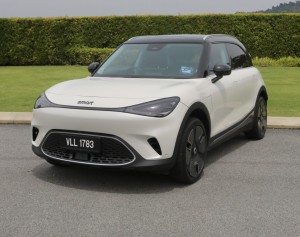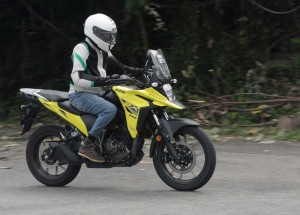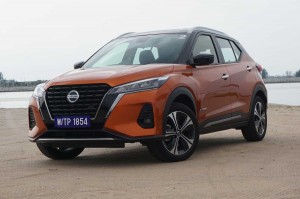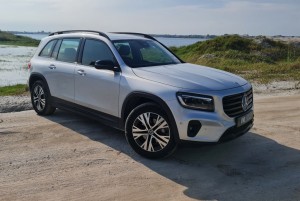Steel or air? The basics behind your car's chassis
By DPA | 17 February 2020
BERLIN: Steel springs, adaptive dampers or air springs? When it comes to the chassis, the choice is huge. But what is the real difference from car to car?
The driving feel and handling of a car are largely determined by the chassis. This includes springs and dampers.
In most cars, steel springs and conventional shock absorbers with fixed damping sit in the wheel arches, which compensate for the dynamic wheel-load fluctuations.
Steel spring suspensions contain coiled springs, the length of which determines the vehicle height while the hardness dictates the comfort and driving behaviour. All in all, they are compact and cheap.
Adaptive dampers
Adaptive dampers, in turn, offer a wide spread for various driving situations thanks to adjustable damper valves.
"They can be pre-selected in several basic chassis settings, such as a comfort and a sport setting," says Karsten Schebsdat, Head of Driving Dynamics, Steering and Control Systems at Volkswagen.
VW generally installs a steel chassis in its cars, only the models of the Touareg off-road vehicle use air springs in combination with controlled dampers.
With air springs, the spring volume can be adjusted, and consequently the standing height and rigidity, while the basic stiffness can be softened, improving the driving comfort.
However, air springs require a control unit and an air compressor.
"Air suspension is more complex, requires more effort, more space and costs more. We don't offer them for compact and small cars, but we do offer them in the luxury class," says Schebsdat.
The differences between steel and air
Ruediger Rutz, responsible for testing various SUV models at Mercedes-Benz, sees fundamental differences between the different types of chassis.
"The biggest one is between the classic steel spring and the air spring suspension," he says.
Regardless of the type, they carry the body of the vehicle. However, the air suspension reacts in different ways to the payload, keeping the vehicle level constant and thereby improving driving behavior.
In the case of steel springs, the driving behavior changes with a higher payload because the vehicle compresses more.
“That doesn't mean that steel springs are bad. A well-made steel suspension offers sufficient comfort, sportiness and safety, depending on the vehicle type and set-up," explains Rutz.
The main advantage of the conventional steel spring is the price: It is significantly cheaper than the other variants while still doing the job for the driver.
The compromise among the chassis
The steel adjustable chassis is a compromise, with steel springs combined with an adjustable damper to allow a wider range between comfort and sport than with a conventional suspension.
Depending on the choice of driving program, the damper characteristic changes at the push of a button.
Adjustable or adaptive dampers can be adjusted by the driver or adapt themselves to the circumstances. They have advantages in comfort in normal driving situations and are significantly cheaper than air suspension systems.
Active or semi-active
Christoph Elbers, head of car chassis technology at the automotive supplier ZF, differentiates between two types of adaptive chassis.
The semi-active switches faster between damper characteristics and automatically changes the corresponding damping force depending on the driving situation and control strategy.
With the active, adaptive suspension, the dampers can also be supported so that, for example, the inner dampers absorb pressure in curves, while the outer ones build up more pressure.
"This is how a car drives through a curve like a flying carpet," says Elbers.
"Drivers can feel the difference between the different suspensions, but this usually happens subconsciously - when they don't feel the pothole on the road or when their car drives through the bend without much inclination," says Elbers.
They only notice a big difference if they drive the same vehicle with a different chassis.
Tags
Autos News
Reviews

6.8
Triumph Tiger 900 GT Pro: Multi-talented adventurer

Hyundai Ioniq 5 N: Born rascal

6.6
Husqvarna Svartpilen 401: Inspiring retro design

8.8
smart #1 (Premium): Agile, engaging, roomy, premium motoring

6.6
Suzuki V-Strom 250 SX: Multi terrain warrior

Proton e.MAS 7 impresses in quick dynamic driving exercises

Nissan Kicks e-Power: Kicking off a new efficiency

6.8
Mercedes-Benz GLB 200: Measured versatility
Videos

The Snowball – Lamborghini’s Heartwarming Christmas Story of...

EVOGO battery swapping solution showcased at IAA Mobility 20...

Jaguar's Bold Type 00 Concept: A Glimpse into the Future of ...
